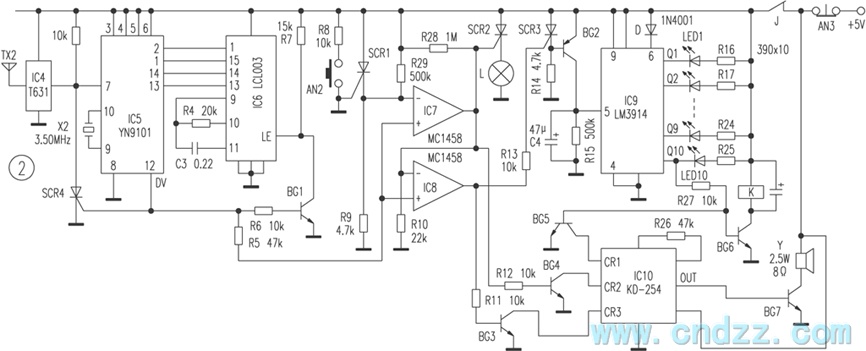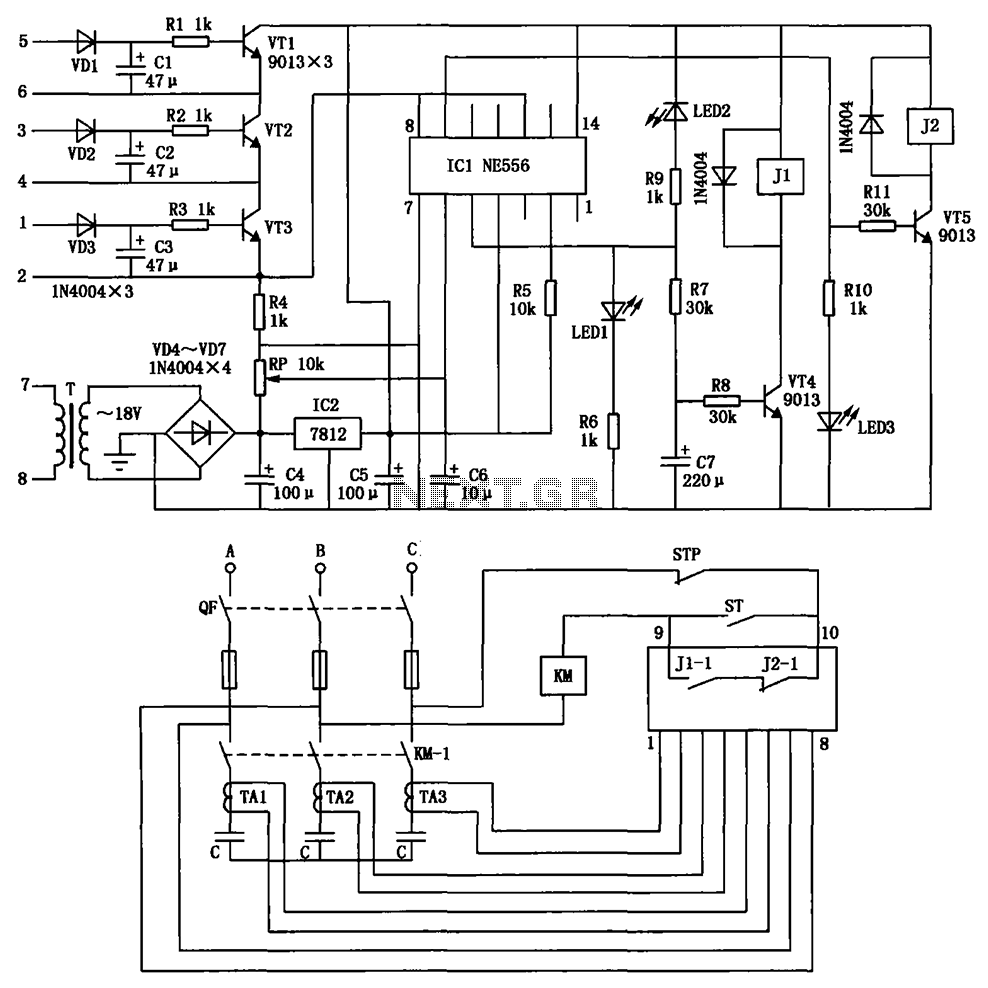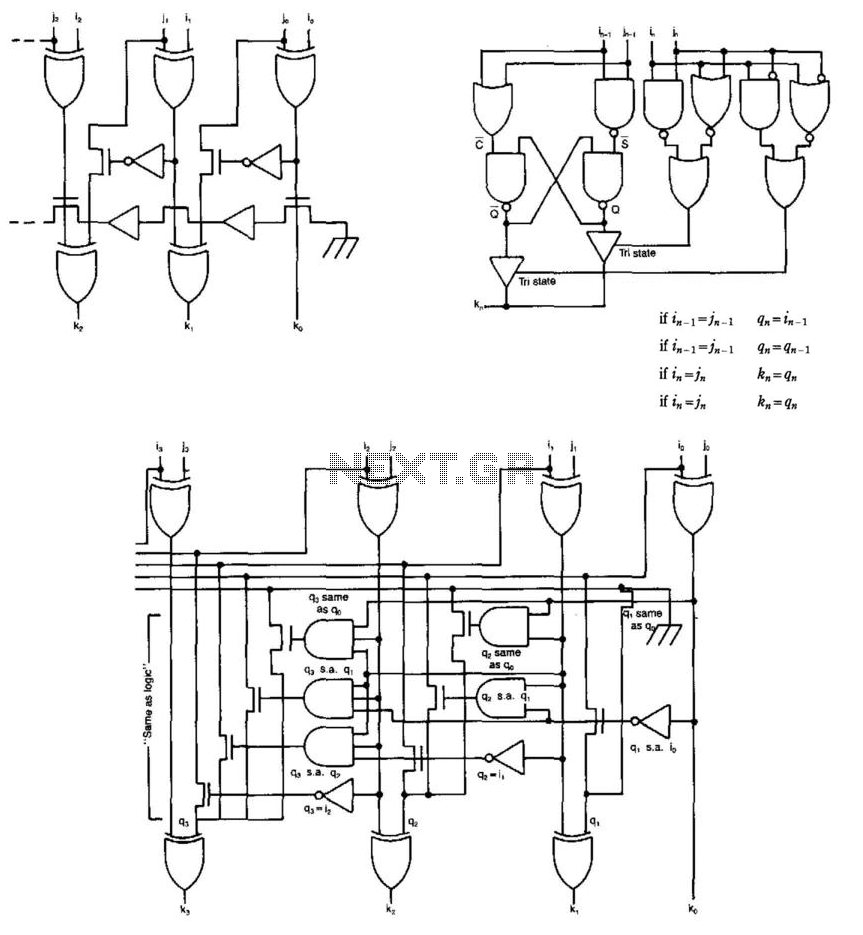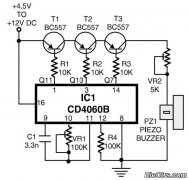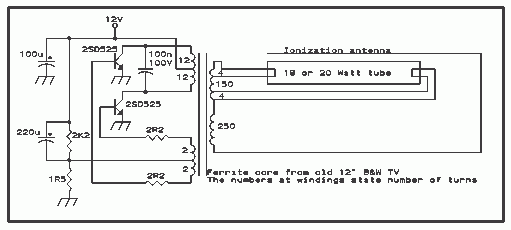
Sound Level Meter Circuit
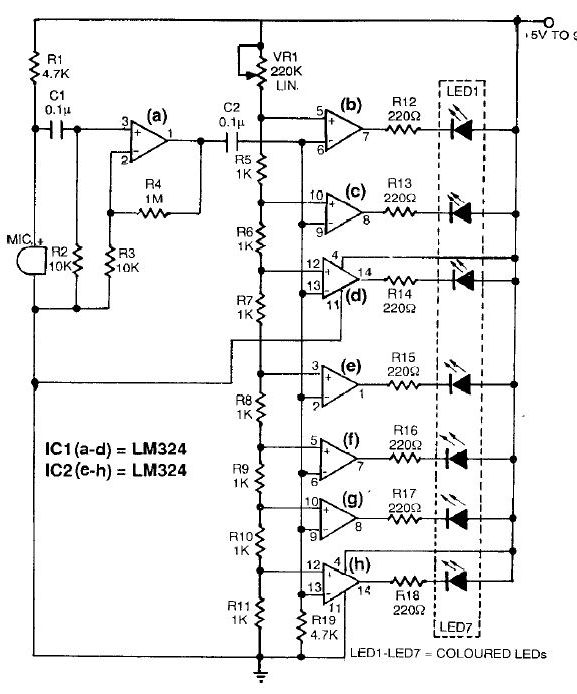
This sound level meter circuit can be used to control the intensity of a sound recording or in a disco. It has 5 measurement domains between 70 and 120 dB.
The sound level meter circuit is designed to measure sound intensity levels in various environments, such as recording studios or entertainment venues like discos. The circuit operates within a range of 70 dB to 120 dB, providing five distinct measurement domains that allow users to monitor sound levels effectively.
The core components of the circuit typically include a microphone sensor that converts sound waves into an electrical signal, an amplifier to enhance the signal strength, and an analog-to-digital converter (ADC) that translates the analog signal into a digital format for processing. Additionally, a microcontroller or a dedicated sound level meter IC may be employed to interpret the digital signal and display the sound level on an LED or LCD screen.
To enhance functionality, the circuit may also incorporate features such as peak hold, which captures the maximum sound level for a brief period, and an adjustable threshold that can be set to trigger alarms or notifications when sound levels exceed a predefined limit. Power supply considerations are crucial; the circuit can be powered by batteries or an external power source, ensuring portability and ease of use.
Overall, the sound level meter circuit serves as a vital tool for monitoring and controlling sound intensity, ensuring optimal audio experiences in various settings.This sound level meter circuit can be used to control the intensity of a sound recording or in a disco. It has 5 measurement domains between 70 and 120 dB;.. 🔗 External reference
The sound level meter circuit is designed to measure sound intensity levels in various environments, such as recording studios or entertainment venues like discos. The circuit operates within a range of 70 dB to 120 dB, providing five distinct measurement domains that allow users to monitor sound levels effectively.
The core components of the circuit typically include a microphone sensor that converts sound waves into an electrical signal, an amplifier to enhance the signal strength, and an analog-to-digital converter (ADC) that translates the analog signal into a digital format for processing. Additionally, a microcontroller or a dedicated sound level meter IC may be employed to interpret the digital signal and display the sound level on an LED or LCD screen.
To enhance functionality, the circuit may also incorporate features such as peak hold, which captures the maximum sound level for a brief period, and an adjustable threshold that can be set to trigger alarms or notifications when sound levels exceed a predefined limit. Power supply considerations are crucial; the circuit can be powered by batteries or an external power source, ensuring portability and ease of use.
Overall, the sound level meter circuit serves as a vital tool for monitoring and controlling sound intensity, ensuring optimal audio experiences in various settings.This sound level meter circuit can be used to control the intensity of a sound recording or in a disco. It has 5 measurement domains between 70 and 120 dB;.. 🔗 External reference
